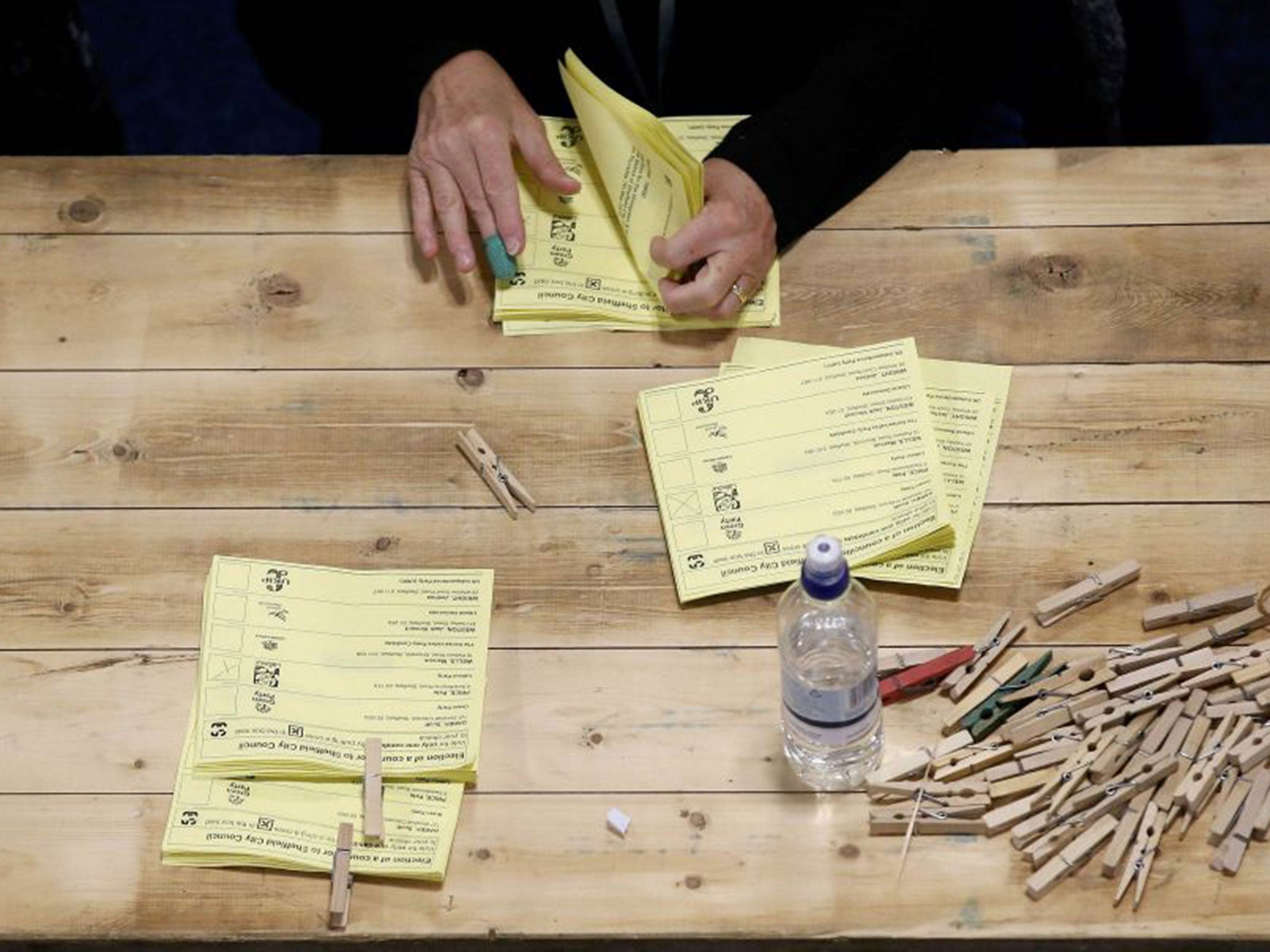Ukip and Greens lead calls for electoral reform - but what are the alternatives?
With millions of votes cast and two MPs to show for it, the two parties are uniting in the cause of PR - John Rentoul examines the options on offer

Your support helps us to tell the story
From reproductive rights to climate change to Big Tech, The Independent is on the ground when the story is developing. Whether it's investigating the financials of Elon Musk's pro-Trump PAC or producing our latest documentary, 'The A Word', which shines a light on the American women fighting for reproductive rights, we know how important it is to parse out the facts from the messaging.
At such a critical moment in US history, we need reporters on the ground. Your donation allows us to keep sending journalists to speak to both sides of the story.
The Independent is trusted by Americans across the entire political spectrum. And unlike many other quality news outlets, we choose not to lock Americans out of our reporting and analysis with paywalls. We believe quality journalism should be available to everyone, paid for by those who can afford it.
Your support makes all the difference.The apparent perversity of the election result has prompted renewed demands for a change in Britain’s voting system. Those demands are led by an unusual alliance of Ukip and the Green Party. Nigel Farage, in his resignation speech as Ukip leader, referred to the fact that his party had a single MP despite the same number supporting it as the SNP and Lib Dems combined: “The first-past-the-post system is bankrupt, because one party can get 50 per cent of the vote in Scotland and nearly 100 per cent of the seats, and our party can get four million votes and just one seat.”
The Greens felt similarly aggrieved, getting one million votes and also winning just one seat. They want an Added Member System (see below). The Ukip manifesto demanded “a new, proportional voting system that delivers a Parliament truly reflective of the number of votes cast, while retaining a constituency link” – without specifying which system.
What are the choices?
Alternative Vote
This was the system rejected by the British in the 2011 referendum. Essentially the same as the present system, but it allows voters to number candidates in order of preference. The result would usually be more proportional than first-past-the-post, but could also be less so. Used in Australia, which also has compulsory voting.
AV Plus
Proposed by Roy Jenkins, the Lib Dem Grand Pooh-Bah (Paddy Ashdown’s nickname for him), for Tony Blair in 1998. This would involve electing most MPs by AV, but would also elect a sixth of MPs to “top up” under-represented parties in regional groups of constituencies. The results would usually be pretty close to matching the proportion of seats with the proportion of votes cast for parties. Not used anywhere.
STV in multi-member constituencies
Called the Single Transferable Vote, which is odd because voters mark their ballot papers in order of preference to elect usually three, four or five MPs for large constituencies. Voters may vote for candidates of different parties. The result is usually roughly proportional, within the constraints of seat sizes. Used for the Northern Ireland Assembly, local councils in Scotland and the Irish Republic.
Added Member System
Similar to AV Plus, but it doesn’t use AV to elect MPs in constituencies, and has more MPs elected on top-up lists. A fully proportional system. In the Scottish Parliament, 56 of 129 MSPs are “list members”. In the German Bundestag, half of MPs are list members.
List system
People vote for parties, with MPs elected from national party lists, starting from the top of the list, in strict proportion to the votes cast. Used in Israel.
What is wrong with proportional represention?
The most important thing to remember is that voters would behave differently under a different system, so you cannot assume that the votes cast last week would represent people’s first preferences if the rules were changed.
That said, advocates of proportional representation ought to recognise that the Tories and Ukip together won 50.6 per cent of the vote in Great Britain (excluding Northern Ireland).
Join our commenting forum
Join thought-provoking conversations, follow other Independent readers and see their replies
Comments